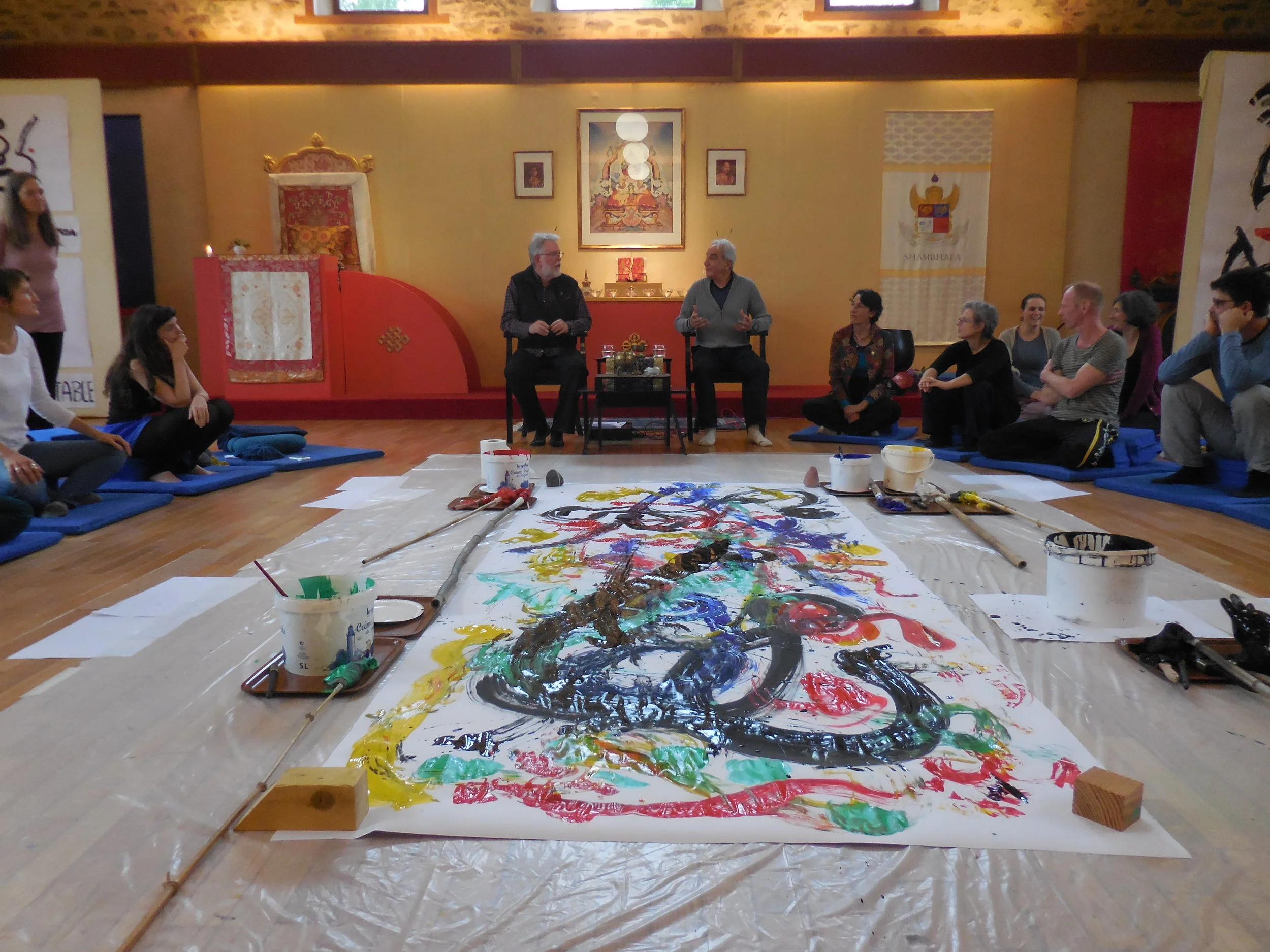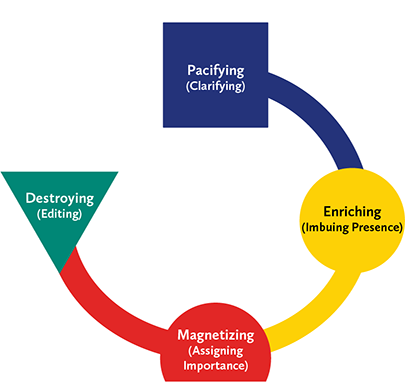
The Creative Process
The creative process expresses our confidence and relates simply and directly with our world.
“It’s a question of paying more attention to the space that exists around us. In doing so, we develop a sense of confidence, confidence that space exists in front of our eyes and that it is not demanding anything. It’s a free world, a truly free world. Obviously, in handling our life, questions and hesitations come up constantly. They are like the blank sheet of paper, the canvas. Out of those hesitations, we begin to make a move.”
As with the viewing process, the creative process starts with seated meditation practice. By meditating we free up the hold that our concepts have over us, relaxing into awareness of ourselves and our world. As the process of meditation connects as more and more to the nature of ourselves and our world, we develop the confidence to make our move in spite of questions and hesitations.
Space, Form, and Energy
The creative process can be described in the ancient principles of Heaven, Earth, and Human. For example, facing a blank piece of paper, an empty stage, an idle instrument, or an unplanted garden, we welcome the open space of not knowing—the Heaven principle. Out of that space, inspiration arises, and we take the leap, make the mark, and begin to create, joining Heaven with Earth. Bringing awareness and heart to the process is the Human principle. Using the contemporary language of Space, Form, and Energy, we explore the principles of Heaven, Earth, and Human. We do this by creating poems, making what we call calligraphies and doing object arrangements.
The Four Actions
Four Karmas, by Sakyong Mipham Rinpoche, 1980
As we develop a formal meditation practice, the mindfulness and awareness we experience naturally seeps into everyday life activities. As art-makers this would include our creative process. As our meditation practice strengthens, we find ourselves applying the same discipline to our creative process. During formal practice the object of meditation is our breath and now our creative process becomes the object of our mindfulness and awareness practice. In this way, the creative process develops into a form of meditation-in-action. Meditation-in-action can be applied to any task, but our main concern here is how it benefits the creative process and, as we will see later, how it clarifies the viewing process.
From the foundation of meditation the Shambhala Art teachings can inform how we engage in the creative process. One lens on this process is the activity of the Four Actions (or known as the Four Karmas in Buddhism). The Four Actions of Pacifying, which involves the activity of clarifying, Enriching, which is about imbuing presence, Magnetizing, which is involves assigning importance, and Destroying, which is about the process of editing. By moving sequentially through these four steps from the ground of meditative awareness, we can work confidently and skillfully with what arises during the creative process (and in life). When applied without the ground of meditative awareness, these four steps can lead to greater confusion and neurosis.
The four actions are a sequential process through which we can progressively uncover wakefulness.
Pacifying / Clarifying
Clarifying is the act of reducing or removing confusion. When used in the creative process or life, the act of clarifying helps to make more evident the form or nature of something. From a negative viewpoint, clarifying can lead to a comfortable situation that numbs us or reduces our intelligence.
Enriching / Imbuing Presence
Imbuing presence is the act of detecting and adding what is needed to a situation. Traditionally, imbuing presence is associated with the act of enriching something, giving it more substance, or physical presence. When used in the creative process or life, the act of imbuing helps to make something with substance and a presence we can feel. From a negative viewpoint, imbuing presence can lead one to confuse quantity with quality, and substance for richness.
Magnetizing / Assigning Importance
Assigning importance is the act of drawing attention to what needs to be seen. When used in the creative process or life, the act of assigning important helps to draw our eye or senses toward what is being communicated. From a negative viewpoint, assigning importance can lead to distraction and the lack of discrimination.
Destroying / Editing
The last action is editing—the act of removing or adding, which itself describes the creative process. Having engaged the previous actions, we might still find the situation requires something more or something less. When used in the creative process or life, editing is about acting with fearlessness and precision to further strengthen and empower the creative process, or its result. From a negative viewpoint, editing can lead simply to destruction and chaos.
The Four Actions
Together, the four actions, when infused with meditation, help us to see clearly, to know what is, and then to act decisively.
Further training on using these four actions occurs in Parts 4 and 5 of the Shambhala Art curriculum.
Square One
First launched as an email newsletter in Summer of 2016, Square One is the community-sourced, community-driven journal of Shambhala Art. Each issue focuses on the creative process of working with art and artistic expression. The theme for each issue draws on the teachings related to the four actions.






